Declan Rice, learning machine
Plus, what we learned at Selhurst Park: another shape, why Gabriel didn't start, what Rice unlocks, and what to make of the dynamic on the left
Albert Einstein described compound interest as the eighth wonder of the world, saying “he who understands it, earns it. He who doesn't, pays for it.”
(I’ll tie it in, I swear.)
At its most basic, compound interest is the result of reinvesting your gains. For instance, if you invest £100 and make 10% yearly interest, you’ll have £110. Next year, you’ll get another 10% on that £110, bringing your total to £121. From there, the numbers continue to multiply upon themselves, in contrast to “simple interest,” where things stay more linear. Gains beget gains:
This concept is applicable beyond the world of investing. Another example is the practice of learning. If we start with a baseline of what we understand today, and add 10% this year, we can reinvest that 110% and compound our returns. Gains beget gains, and our understanding grows exponentially.
We’ve heard the Arteta watchwords over the years, all of which I yell at my dog at the dog park: Duels! Passion! Energy! Respect!
Arsenal’s newest midfielder, Declan Rice, has a few of his own.
When reading through his interviews since joining, perhaps you’ve observed a recurring theme:
“For me I have only been here ten days and it has been a lot to learn. I am eager to learn it.”
“I am not going to learn it in two weeks — it is going to take some time — but once I have got it, once I add the stuff he wants to my game along with my qualities, hopefully I can improve tenfold.”
“He still wants me to have those qualities but on top of learning his stuff. I think he sees someone that’s really eager and he knows that I can go to another level if I start to apply the stuff that I’ve never learned before.”
“It’s a waiting game. Of course you can’t wait forever. I’m already learning so much and I’m working so hard to try to improve and understand it.”
"So, hopefully with the manager's guidance, learning the way of playing, adapting because it's completely different already. It's a completely different set-up to anything I've ever had.
"It's going take some time, but I'm sure once I've learned it all and I've improved myself, then I feel like I'm going to go up the levels, which I know I can get to."
“I can see now why they probably wanted to bring me here really quickly because it is a lot to learn.”
“I just want to improve, want to learn, want to get better, want to understand how the manager wants to play.”
I have about a dozen more, but you get the idea.
When asked to describe what, exactly, he’s been learning from Arteta, he’s been effusive and specific — talking about his tactical vision, and continually reiterating how he’s seeing the game with new eyes.
It can be said that Rice left his boyhood club to win trophies, to play in the Champions League, and to make his stamp on the global game. And that’s all true. What is also true is that at 24-years-old, the arc of his learning at West Ham had the risk of leveling out in the years to come. He sought a bigger challenge, and with it, a higher interest rate.
Going through his performances before Crystal Palace, it was immediately reinforced how explosive, talented, and dynamic he is. One needn’t squint too much to see how he was on his way to providing a massive impact on the squad. But it was also clear how much was being asked of him to learn. Essentially: two positions — including the hardest in world football — played three or four different ways, depending on the opponent, in successive weeks. Simply be Thomas, Rodri, Gündoğan, Xhaka, and Touré all at once, please. Thx, bye!
Despite this learning curve, there was still immediate impact, including a disciplined performance against Man City in the Community Shield, and three great shots against Nottingham Forest. But there’s also been adjustment. Especially against Manchester United and Monaco, you could see him feeling out when to run, when to sit, how to hold space without sprinting at the carrier as a #8, when to be the hero on the defensive flanks, and when to let other people do their jobs. He’d occasionally double up on rotations, or expect different movements from his teammates, throwing his hands up.
Johan Cruyff said that “teams don’t learn. Individuals within the team learn. Development is a personal process, even when conducted in a team environment.”
Rice and Arteta have basically opted for the philosophy of immersion — the type you seek when you’re learning a new language, or looking to overcome a fear. I’ve heard Thomas Tuchel talk about giving your best players the toughest challenges because that’s what they need and expect.
With all the responsibilities placed upon him, patience was in order — but after the performance against Crystal Palace, we’ve learned that patience may not be exactly necessary.
As we’ll cover later in this article, Rice’s investment in learning is starting to accrue compounding gains.
🌀 Predictable unpredictability
After featuring the lowest amount of changes to the starting XI last season, Mikel Arteta has been beating the unpredictability drum all pre-season.
“The idea is to be more unpredictable every year, to become more difficult for the opponents to stop and nullify what we want to do,” he said. “That’s what we have now, especially at the back and in the midfield. The options we have, to open up the spaces… we have many more options than we had last year.”
Before the game against Nottingham Forest, he reiterated the point.
“We can play different formations and shapes. And we can move structures in different ways that in the past we haven’t been able to do. I don’t want Kai Havertz to stick in one position. I prefer to do that with other players as well because when you do that you are more unpredictable, you open your options, you open their minds to other things. When you explore that, and we have many examples of that in the squad, you get very good surprises.”
This trend repeated itself on Monday in a difficult trip to Selhurst Park. While on first glance, the lineup pointed to a repeat of the block-busting strategy used against Forest the week before, the reality was more complex.
Facing Forest, Arteta opted for a boxy diamond, in which Rice would join the early build-up phase as a double-pivot, often stooping all the way to the backline to help, or contributing in the more expected way:
Then, in more advanced areas, he’d hit the left half-space. Havertz would then swing into a “free #10” role, free to go where he pleases. Thomas was a lone-pivot, hanging back by his lonesome:
This was done for a straightforward reason. When a team runs a no-intervention, 5-back defensive look, Arsenal have previously relied upon quick rotations, occasional overlaps, but mostly skill advantages to break it down. Now, they want to add a fourth advantage: a sixth attacker forward. Not in spurts, but by default.
This resulted in free moments like this, when Rice was able to overload the middle of the line:
It didn’t ultimately create an explosive attacking performance, but many of the ingredients were there.
Crystal Palace, however, have a different strategy. They line up in a tough, well-drilled 4-4-2, with many formidable defenders in the mix, and a touch more activity. As such, Arsenal don’t necessarily need 6 attackers flung forward at all times; their standard, 5-attacker shape is sufficient to gain a “plus-one” up top.
So that’s what they did. Whereas last week was something largely new and novel, this week was a little easier to digest.
It was last year’s tactics, pretty much — just flipped in build-up.
Comparing it to last year’s omnipresent shape:
Havertz was in the Xhaka role, instead of roaming around as a free #10
Rice was essentially in Partey’s role
Thomas was mostly in Zinchenko’s role, just on the right (and a little less laterally free), which pinched Rice a touch left
Tomiyasu was in White’s role, but on the left
You can see this all show up in the passmaps:
You can also see it based on where Havertz got the ball, even if his circle looks roughly the same. Compared to last week, when he was on each side of the pitch to roughly-similar degrees, he was much more “parked” this time out, helping pin defenders on the left while overloads were sought elsewhere.
Here were his received passes:
And, finally, you can see it in action. Thomas would drop low and receive, sometimes going all the way to the backline, just as Rice did last week, and Zinchenko often does:
But generally speaking, in more advanced areas, it was Rice covering back to hold the fort, and Partey with the option to roam forward:
Partey was generally not a sixth man in the box, but more of a Rightchenko. Interestingly, this game gave us the clearest picture yet of what the left-back will offer when deployed alongside Rice — a pairing that, I repeat, we haven’t seen yet — and I’d say the early returns are promising. Rice looked plenty comfortable in the middle and on the right for this Arsenal side.
Instead of just leaning on a sense of “this is the way Arsenal play football, deal with it,” there is an increasing tilt towards tailor-made approaches depending on the opponent. By keeping plans under wraps, the opponent gameplan reduces in certainty, and Arteta can focus on inflicting what they’d least like to happen.
But it’s all based on a recognition of the opponent’s likely out-of-possession strategy. Arsenal face dramatically different game types. Many (most?) will be low-blocks, but there will be a couple different varieties (5-back, 4-back, etc). Some will settle into a mid-block and then counter. Some will press high, a list that includes top opponents and the likes of Southampton.
Now that Arsenal have a longer bench of unicorn talents, and a little depth to spare, they are no longer “one-size-fits-all” with their approach. Different game types will be treated as they are.
This also helps explain why Tomiyasu started, and Gabriel didn’t.
🤔 Tomiyasu starts, Gabriel doesn’t
Let’s look at the conditions that made it so, in something of a “decision tree” format:
With Timber hurt and Zinchenko on the mend, Partey and Kiwior are the only fully-healthy potential inverters on the squad, as it stands.
Partey is the superior player, and he must invert from the right.
As such, you have a back-three behind made up of the LB, LCB, and RCB.
You want Saliba as the central figure in that back-three. That virtually locks in White on the right. Two spots down.
The left is, then, is the mirror of White’s role from last year: a supporting CB/FB hybrid who can overlap as necessary.
While Gabriel can offer much of the skills necessary for that role (IMO), he wouldn’t be able to offer enough wide, full-backy support to Martinelli, at least in theory.
Thus: Timber last week, Tomiyasu this week, potentially Kiwior in the future.
For an example of what might be hard to picture Gabriel doing up top, see this:
I can’t say with certainty that nothing is happening behind the scenes with GabiXL. But in this new reality of different looks and increased competition, there is a fairly straightforward tactical explanation for what took place, and what could take place moving forward:
Gabriel will continue to start when Zinchenko does
Gabriel will continue to start in the 4-2-4 look we saw against Man City, regardless of full-back
Gabriel is not ensured to start when inversion comes from the right, as the only role on offer is essentially LB
Make sense? Well, it did in my head.
(Edit: hey, look, it made sense in Lewis’ head, too! A more trustworthy source. Go check that piece out for a deeper dive on the question, with some similar conclusions.)
Tomiyasu had a relatively solid, though mixed performance. He’s virtually innocent on his first yellow, and completely innocent on his second. In general, I’m happy to see his big-space athleticism fully back — he is sprinting as fast as he ever has.
I have few issues with his angles over here on the left, as he’s one of the more ambipedal defenders in world football. Especially if you look at his work for Japan, he can hit virtually every pass imaginable with either foot, and shouldn’t have trouble with the left-footed rollers out to Martinelli:
I sense he’s adjusting in two ways. The first is in offering a regular sense of support and overlaps for Havertz, Martinelli, and the gang over here. It came in spurts, but didn’t generate consistent threat, and was a proximate cause for the lack of attack over there. There were a few respectable moments:
The other area is in these wide 1v1 duels. We can be so used to him patiently sucking the life out of these attacks, but on the day, he was having some subtle, heavy steps on his back foot, which allowed Ayew to get a touch of space on him a couple times:
In general, Tomiyasu is a huge asset to the squad. While he played capably, he is no finished product on the left; even if he looks pretty comfortable, one shouldn’t understate the difficulty of flipping his wide technique from right-back, where he’s played seven times as much (6,782 minutes to 943). There is plenty of trajectory left to unlock.
Longer-term, Kiwior offers a sky-high ceiling in this role as a hybrid CB/FB, with every bit of size, speed, and passing potential you could ask for. It will be fascinating to see how his “high-left” game evolves, and in general, whether he can force his way into the mix.
😢 Please stay, Gabriel
But what should we make of the (not-completely-dismissable) reports that there is interest in Gabriel, especially when paired with his first time on the bench in forever?
I find it difficult to imagine that anything would be coming from the club side. For one, Gabriel isn’t far removed from a 73-match start streak and donning the armband during the preseason. Things may be getting more nuanced, but there is still a track record of immense trust and support there.
The other part is just how rare of a profile he represents, and how difficult he would be to replace. Whatever you think of transfermarkt, he’s the 14th-most valuable CB in the world (€55m). Now, when you look at left-footed CB’s, he’s third — after Gvardiol and Bastoni. On the open market, he should be incredibly expensive; Fabrizio Romano put Arsenal’s valuation at €200m. 😀
What if the unforeseen took place? In a window where players like Gvardiol, Laporte, Ndicka, Lukeba, and van de Ven have already moved — not to mention someone like Min-jae Kim — there are vanishingly few players who could contribute immediately in that category. Without it turning into a full research project, Schlotterbeck, Inácio, and Bastoni are the only ones who really come to mind. Hincapié is a little bit interesting, though flawed, and not in the Gabriel role, exactly. Nayef Aguerd wouldn’t look out of place on a top side.
There are some prospects I like plenty — Filipe Relvas at Portimonense is a random shout — but you don’t want Jakub Kiwior to be your most-senior player in this category.
I will admit that I love Schlotterbeck.
The more likely contingency plan would be to find somebody who falls out of the neat “left-footed LCB” category. As we saw on Monday, a player like Marc Guéhi certainly has the quality to play for a team like Arsenal, and he’d offer just about the highest floor on offer in the role (despite his lack of height and his right-footedness), not to mention other qualities. After that, you’d have to shoot for the moon with the highest-trajectory CB’s on offer, including those who could also help back up Saliba’s huge responsibilities at CCB: António Silva, Ousmane Diomandé, Giorgio Scalvini. Anel Ahmedhodžić is well-revered in these parts, but not exactly as a Gabriel successor.
Despite the discussion of all these options, hopefully the central point is clear. Compiling all factors — including age, schematic fit, and trajectory — there is one left-footed CB whom I’d rank higher than Gabriel with any degree of certainty, and that is Gvardiol (and I think they’re similar-quality players at the moment, with the latter working out kinks as a 20-year-old defender); Colwill and Aké certainly deserve shouts as well. There are some interesting players after that, to be sure, but only a couple anywhere in the world who could join a grouping of Gabriel’s skills, profile, and readiness.
Any time spent looking for Gabriel alternatives will be time spent increasing your gratitude for all he offers.
💥 Introducing Declan Rice
OK, we’ve had that intro about him. Now, let’s review.
In the Community Shield, Arteta was able to run a sturdy 4-2-4, with two world-class DM’s through the middle and Havertz up top.
Against Nottingham Forest, who went with a 5-back and camped out at their goal, Arteta was able to go with a 3-4-3 diamond, with six attackers flung forward in the attacking phase.
Against Crystal Palace away, Arteta went with a more familiar look.
How is all of this suddenly possible?
The answer has a name: Declan Rice. And though he’s had his press conference, interviews, and multiple good performances already, this felt like his true introduction.
Rice confirmed this in the post-match interview:
“Against Nottingham Forest we played a diamond in midfield and I was on the left of the diamond. Tonight, I was the single pivot so I dropped back one spot.”
To see how things can evolve game-to-game, you can look at this graphic, also from @markrstats, who you should give a follow:
What you’ll see was that a lot of the core responsibilities across the XI looked broadly similar — except for Rice’s, who is both deeper on the pitch and more central. This led to a commanding performance, in which Rice was the main character for most of the night:
His role had a few benefits. First, in deeper areas. Once Palace started pressuring a bit, Rice used his burst to get around them and break it:
You’ll notice a few things from that shot: Rice tucking into the blind spot, then going brrr. White pointing to the free man before Saliba even releases the ball to Rice. And Partey as a width-holding, touchline full-back.
When facing the fiercest presses in the world, Rice may still require a little more support than you’re seeing here (in the past, he’s been a bit conservative when things get crowded), but the open spaces on offer in these quasi-pressure situations allow him to use his special qualities to bust things out.
Once the ball gets to the halfline and the game is in front of him, he’s already on the level of the best 6’s in the world. He showed this a bit at West Ham, but it was most evident when Rice was running the show for England and they needed a goal (i.e., when the Southgate handcuffs came off). I was so impressed with his play against France in the World Cup after that Tchouaméni worldie.
This is a simple example, but shows how he can move defenders around and dictate play as a “point guard” type:
That pass isn’t the most sparkling example, but what you saw throughout was weighting, nudging, timing, ambipedaling, driving; all the nuance you’d hope he’d pick up over the coming months is already on display.
In those long Declan Rice scouting reports we did before he signed, we outlined his ideal uses, and pointed toward the necessity of occasionally “unhooking” him from some of the rare-exception “sitting 6” responsibilities that you usually see in Arteta and Guardiola sides. In a phrase I can’t believe I’m re-typing now, I called the ideal in-possession role “Jorginho in the streets, Guimarães in the sheets”:
As he moves forward, he can play a little less like his England self, and more like Bruno Guimarães, who, despite having fewer touches overall, has 8 more touches in the attacking third per 90, and bombs forward to the box much more often, with a player like Longstaff covering behind — helping him contribute 9 G+A in league play (to Rice’s 5).
In one of the more thrilling moments of the game, Rice offered this:
If you caught it from another angle, you would have seen Rice sizing up his options and the teammates around him. What he saw was that Thomas was offering “double-width” out wide, which means he was pretty far back as a full-back; behind him, was White, Saliba, and Tomiyasu. With Eze sleeping, this gave him the ample opportunity to bomb:
Whereas last week he might have more of a regular presence in the box, his central position offered him the ability to maraud and dictate play as the Transition Fun Police with more authority. Jorginho and Thomas are definitely capable of having games like Rice did on the ball; they will have a lot of trouble matching him here. There are times when I think he’s the best player I’ve ever seen at stuff like this:
Out-of-possession, there was one more interesting nugget. In the 4-4-2 block, we’ve seen Ødegaard and Havertz lead the press in the forward “2” at different times. Here, Ødegaard stayed up and Havertz dropped back.
This may have been less about those two players, who are different though similar-quality pressers, and more about where Rice is stationed. By having the option to drop either of them back, that means Rice can cover the side of the more vulnerable full-back.
In this case, that meant Partey got Rice’s help. Here, you can see Partey getting dragged inside, so Rice and Saka are communicating and aggressively supporting the lighter Arsenal right:
Last week, you may have seen Partey look a little haggard when defending wide-open spaces against the wingers on the right-flank. You know who else has? Virtually every inverter:
And that’s why you’ve still seen a bunch of “Zinchenko moments” from the likes of Tomi, Tierney, and Kiwior. It’s hard to add defensive solidity, midfield control, up-pitch contributions, and have the speed to track back all at the same time. A tall order.
Same goes for João Cancelo. There’s a reason why John Stones and Jurriën Timber offer such rare skillsets: for almost every human alive who plays that role, the inversion comes at a larger cost when out-of-possession. If this shakiness happens to the likes of Tierney, I hope that offers some modicum of grace for Zinchenko’s performances, which are mixed, to be sure, but also deserve more nuance than “not a good defender.”
Which brings us back to Rice. With such a clear spot to attack against Arsenal, the idea of him helping cover whatever side is vacated by the full-back is mighty appealing.
You’ve seen his on-ball comps. But look at how seamlessly he becomes a CB here as White steps up, then helps cut off the angles for a 1-2:
This is, frankly, something he’s shown consistently since he was a teenager. But when you combine it with what he’s learning so quickly — Arteta-taught timing, spacing, interplay, patience, rotations — and you see how much potential there is left to unlock, you start wondering what is peak looks like. It’s all-timer stuff.
🔥 Final thoughts
OK, this thing is long enough.
Let’s do a speed round of random, incomplete observations:
If Rice was my top player, Nkeitah was my second. There was so much savvy, detailed stuff in his performance — timing runs, dropping shoulders, turning, picking up fouls, drawing the penalty, managing tempo, etc. His misses weren’t awful and his overall impact was immense.
I wholeheartedly agree with the piece by Adam from Cannon Stats (subscribe, subscribe, etc). I’m not sure any striker bar Harry Kane can match the expectations of the Arsenal fanbase at times: we’re looking for a giant, fast, aerially dominant, false-9, target man, poacher, who outperforms their xG, makes everybody around them better, and is always in and out of the box, all at once. Maybe Ferguson or Osimhen can get there … for a cool €150m. But we’ve been spoiled by Gabriel Jesus as well; any fault with Eddie’s game can amount to “striker acted like striker,” and we can so often hold the 9 responsible for the performances of the wingers and 8’s, when the reverse question can just as rightly be asked.
Now, of course there’s nuance there. I went back and watched those performances from the winter and spring and it’s pretty clear that this is not a case of groupthink. Martinelli does, in fact, work better with Jesus — not just because of their interplay, but because of the vacated central positions where Martinelli thrives. This also shines a light on the burden placed on Saka every week: how often he’s just left alone and asked to break down two men. There are a lot of potential answers, but one of them is simply Martinelli improving at beating his man 1v1 in more settled situations. That’s not on Nketiah.
I am a believer in Havertz in this position, though not without conditions, and am not sure if the Nketiah/Havertz/Martinelli trio has the potential of others; perhaps a little Trossard is needed, as a treat. Havertz nonetheless put together a subtle, mature, energetic performance — winning balls as a presser, and making endless runs. There is one ball, and as you digest what Rice was saying earlier about staying put and learning to keep space while playing the 8, remember that if Havertz sprinted toward the ball-carrier more and demanded the ball at his feet, the entire dynamic of the attacking line would likely suffer. His output will fluctuate based on the decisions of others, and adjustment isn’t unilateral — it’s up for his colleagues to learn his game, spot his runs, and give him the ball. That’s still a work in progress.
What wasn’t a work-in-progress was his late-game work. He is a lab creation in the role of lead-protecting striker: he can get the ball in the air, he can hold up play, he can draw fouls, he can foul in ways that don’t get carded, he can press without getting tired, he can hit runners on the transition, he can shithouse. He’s perfect. 😍
Regardless, help is on the way. Jesus is back in training, and Zinchenko made his debut. The dynamics will naturally improve, and I’m most excited to see what Rice/Zinchenko/Martinelli/Jesus/Havertz can do as a rotating posse. (Did you fucking see how quickly you could fucking feel the impact of Zinchenko’s fucking passing?) With Ødegaard and Saka on the other side, the balance feels right.
What I am a little confused by is why Nketiah played the role of expansive, excellent, dropping false-9 against Monaco (when we were already using 6-man build-up), but stayed more “parked right” this time, without venturing out left very much. I reckon it was probably the wrong call then, but not necessarily this time.
Just a personal preference, but: I’d rather give Martinelli entire games off than sub him out late with leads. I’d love Havertz or Jesus being able to ping it to him in transition.
The game of Thomas was interesting. Where he usually thrives (snappier transitions), he started off loose — but when the game settled down, and he was called upon as a true full-back, he was pretty immense and measured. He won 6/7 ground duels, and apart from those earlier moments, his passing was top shelf.
I have nothing interesting to say about White, Ødegaard, or Saka, although I should. They were good! If there was any doubt, Ødegaard’s officially got that dog in him.
The disgusting, late-game terrorball was delicious. At the Etihad, let’s start off with a 5-3-2:
Backline: Kiwior/Gabriel/Saliba/White/Tomiyasu
Middle: Jorginho/Rice/Partey
Front: Some combination of Jesus/Ødegaard/Havertz
I’m totally kidding. Or am I?
Every time I watch Saliba, I wonder if we’re understating things. He and Rice together through the spine have every bit of potential of being the two-best in the world at their respective positions, period, and will help empower and explain everything around them.
Just an opposition note, but you saw how much trouble Eze gave to some of the better defenders in the world. That kind of dragging, dribbling, crowded, unpredictability is exactly what you want against a settled block. It’s that profile, rather than pure right-wing depth, that a no-Saka Arsenal can run a little short on, depth-wise. Ideally, we’d add that, but the squad is still just too jam-packed.
I pulled the stats from the first half and virtually all of it was “up” on last year’s averages: more passes, higher percentage, more passes to the final third, more shots, more attacking duels, etc. There was some overthinking or pure misses in final actions, and we’ll just keep looking for that to get ironed out. But the performance was good.
Ramsdale will not go without a fight. As we all expected.
There’s a proverb that says “what I heard I forgot, what I saw I understood, and what I did I learned.”
The recent Arsenal additions have been learning a lot.
Even better, they’ve been winning while doing it.
Be good. Happy grilling.
❤️

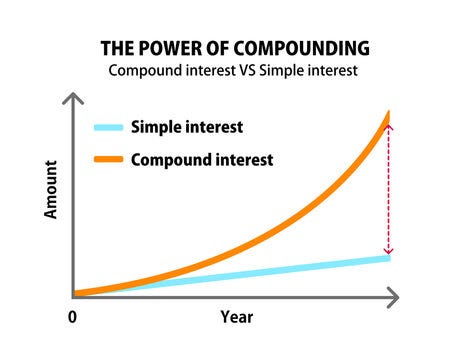






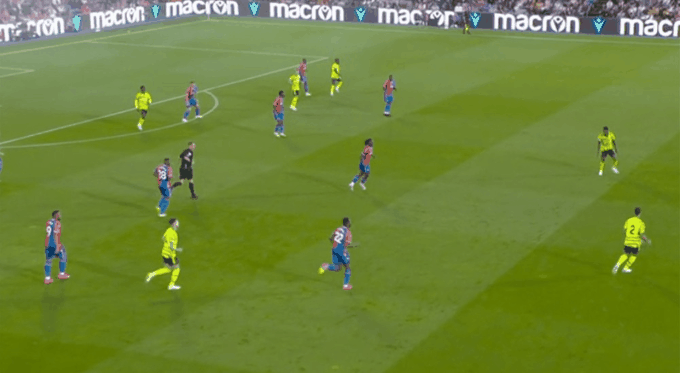


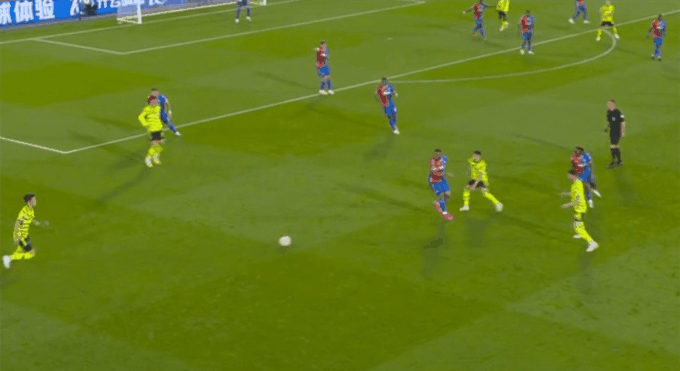
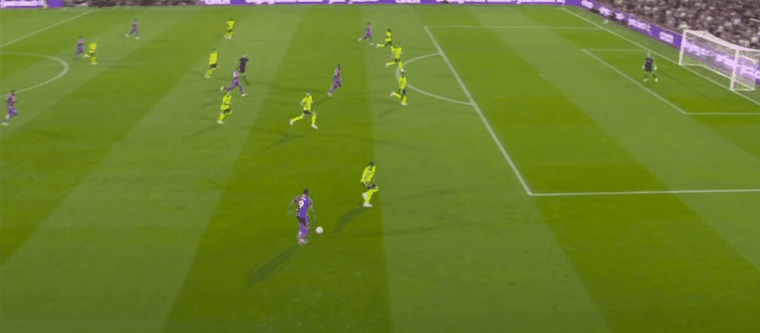




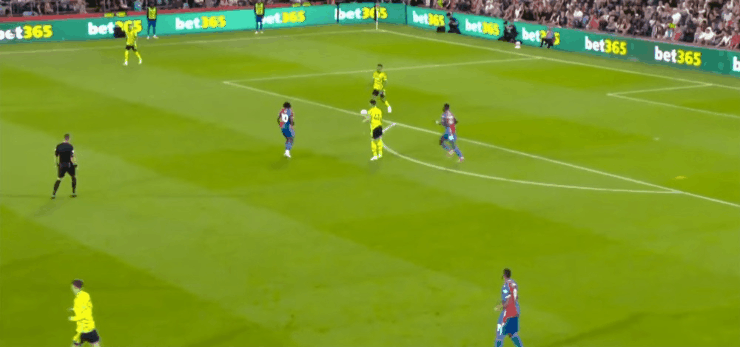
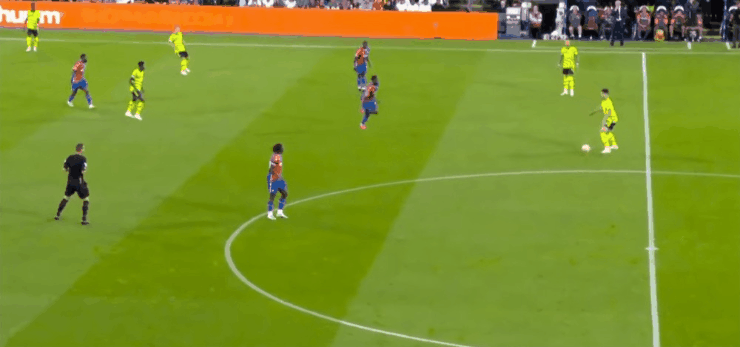



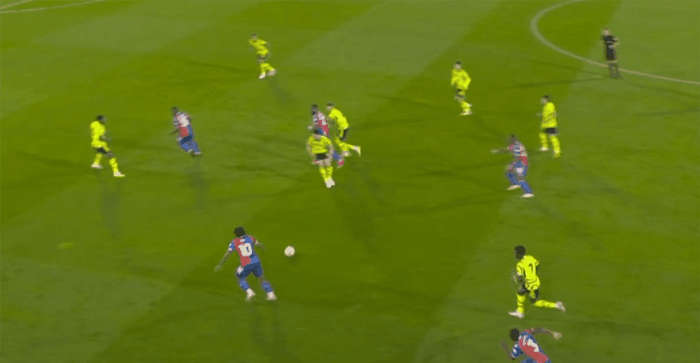
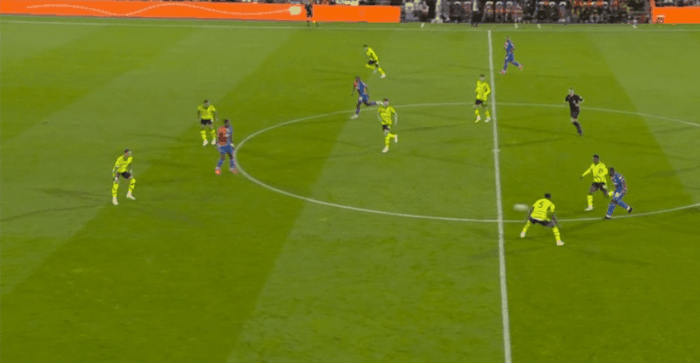
Another amazing write up. Quickly becoming the highlights of my week! Love the tie-ins to non-football concepts/sayings.
Lots to eagerly follow as this team develops. Thanks for the close reads of Gabby M selection and Havertz and Rice roles. I’d be curious which upcoming fixture (assuming injury returns from OZ and GJ) likely presents to your mind the next requirement for a new(ish) system? Beyond what we’ve deployed so far? Or would that answer depend on the UCL match ups?